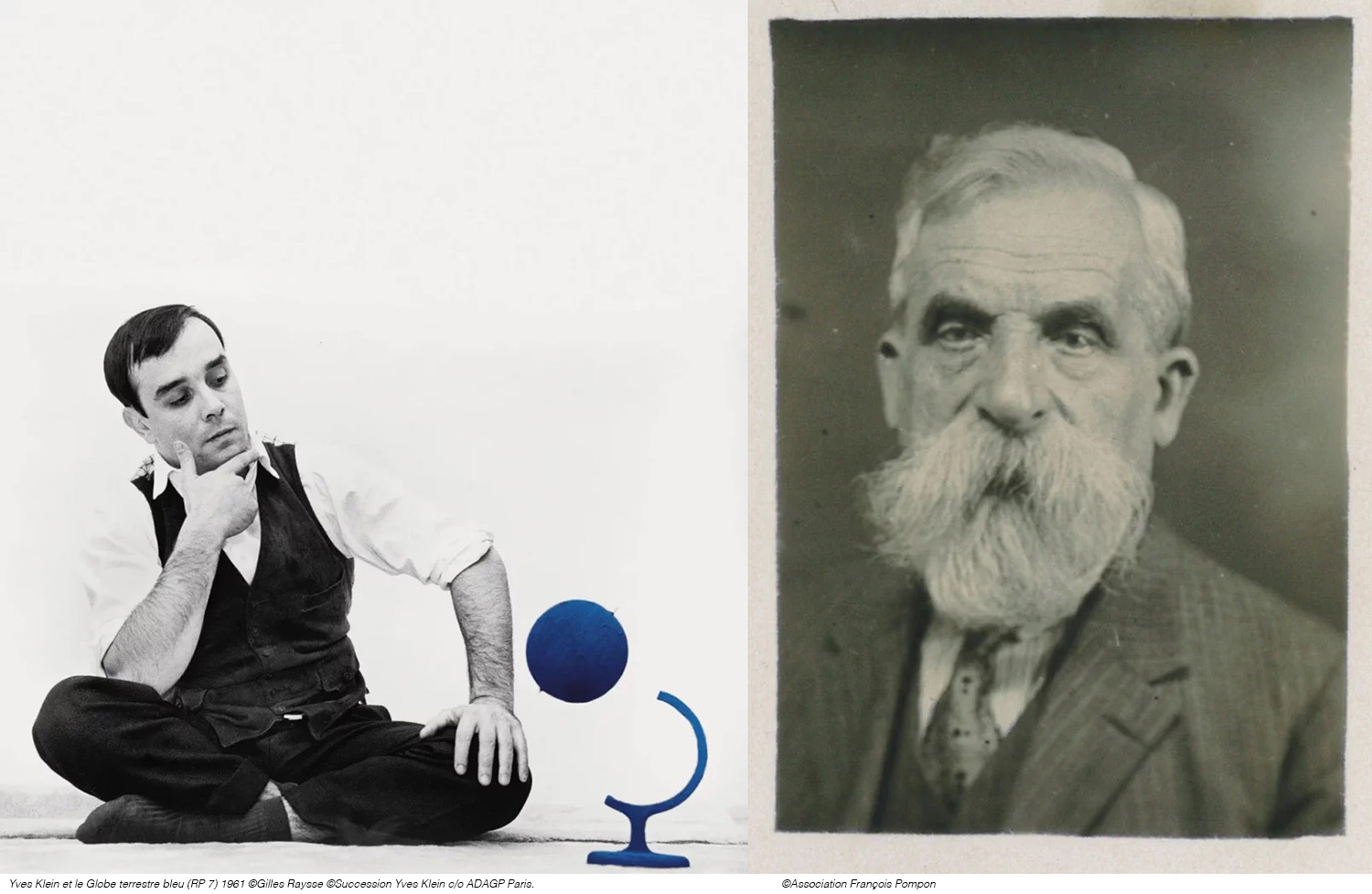
L’ours Pompon - Edition Yves Klein, an iconic sculpture that merges the work of two great masters. It is made after the original of François Pompon’s polar bear and finished with Yves Klein's blue, authorized by Yves Klein Archives Foundation and the François Pompon Association.
L’ours Pompon - Edition Yves Klein has been crafted following François Pompon’s L’ours blanc, a giant sculpture of a polar bear made of cast and first shown at the Autumn Salon in Paris in 1922. The most famous one, created in stone, can be seen at the Musée d’Orsay in Paris.
François Pompon (1855–1933) worked as a practitioner for Camille Claudel and Auguste Rodin. In 1905, François Pompon definitively opted for animal beauty and the simplification of forms. When creating L’ours blanc the artist ripped off the details of the animal and still he caught the flow of the moment, pose and texture in his sculpture.
In this edition, L’ours Pompon is covered by Yves Klein blue, the ultramarine colour with mat texture registered by the artist under the name IKB (International Klein Blue) in 1960. This paint was the result of Yves Klein walking into Édouard Adam’s atelier in Paris in 1954 searching for a medium that achieved the pureness of ultramarine blue pigment.
François Pompon (1855 –1933) was a French sculptor and animalier born in Saulieu, Burgundy, France. At age 15 he was working as an apprentice marble carver in a Dijon funerary monument company but soon thereafter took up studies at the school of fine arts in Dijon.
In 1873 his family moved to Paris where Pompon found work at rebuilding projects after the Franco-Prussian war. His first assignment was to produce architectural ornamentation for the new Hotel de Ville.
Beginning in 1876 he studied under the noted animalier sculptor Pierre Louis Rouillard at the École nationale supérieure des arts décoratifs. To support himself, he took jobs as a craftsman working for different sculptors. Later on he came to be an assistant to Camille Claudel and Auguste Rodin for whom he became head of the workshop. Rodin once told him, "you will be a great artist" after viewing one of his sculptures.
Pompon made his Salon debut in 1879, exhibiting a statue of Victor Hugo's Cosette (from Les Misérables). As it turned out Rodin was correct—he would become a great artist—but it would take nearly 50 more years. He was not fully recognized for his artistic accomplishments until the age of 67 at the Salon d’Automne of 1922 with the work Ours blanc (White Bear). He was a pioneer of modern stylized animalier sculpture.
Yves Klein (1928 –1962) was a French artist and an important figure in post-war European art. He was a leading member of the French artistic movement of Nouveau réalisme founded in 1960. Klein was a pioneer in the development of performance art and is seen as an inspiration to and as a forerunner of minimal art as well as pop art.
During his adolescence Yves Klein met Arman who also was born in Nice in 1928. At the age of 19 they divided the world between them. Arman chose the earth, the material world, and Yves Klein the infinite sky, the spiritual world. Klein and Arman were continually involved with each other both creatively, as Nouveaux realists and as close friends. The two worked together for many years and Arman even named his son, Yves Arman, after Yves Klein who was his godfather.
By choosing to express feeling rather than figurative form, Yves Klein moved beyond ideas of artistic representation, conceiving the work of art instead as a trace of communication between the artist and the world; invisible truth made visible. Yves Klein’s practice revealed of new way of conceptualising the role of the artist.
Yves Klein used blue as the vehicle for his quest to capture immateriality and the infinite. His celebrated bluer-than-blue hue, soon to be named ‘IKB’ (International Klein Blue), radiates colourful waves, engaging not only the eyes of the viewer, but in fact allowing us see with our souls, to read with our imaginations.
From monochromes, to the void, to his ‘technique of living brushes’ or ‘Anthropometry’; by way of his deployment of nature’s elements in order to manifest their creative life-force; and his use of gold as a portal to the absolute; Yves Klein developed a ground-breaking practice that broke down boundaries between conceptual art, sculpture, painting, and performance.

